JiuWeiHu/九尾狐
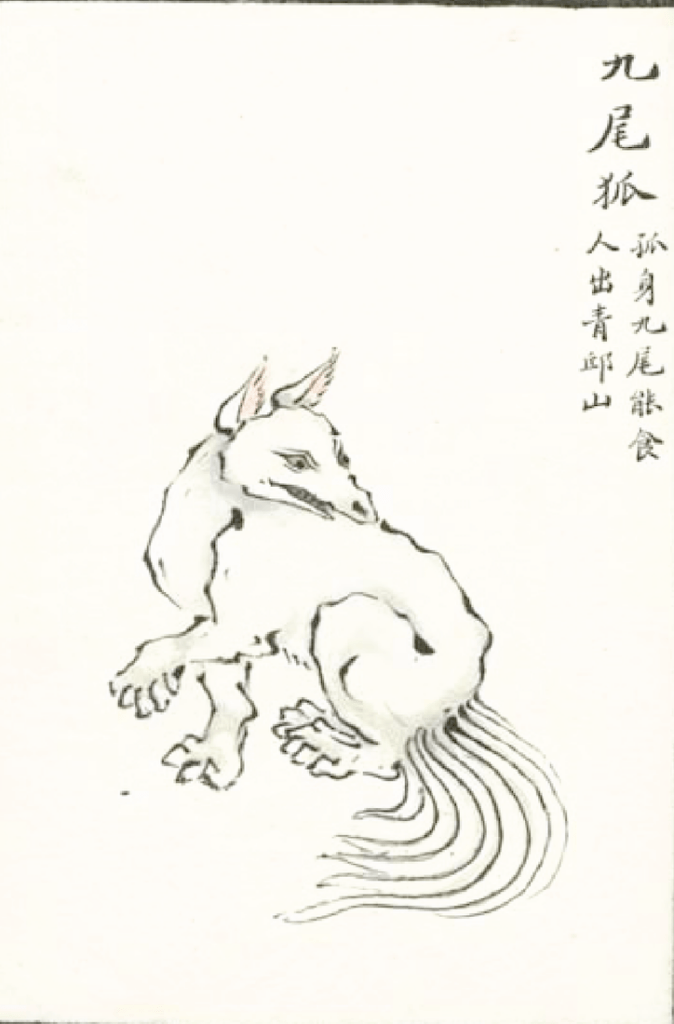
Fox body, with nine tails, eats humans, appears in Qingqiu Mountain
《山海经》
青丘之山,有兽焉,其状如狐而九尾
“The Shanhaijing,” also known as “The Classic of Mountains and Seas,” stands as a revered treasure within ancient Chinese literature, captivating generations with its enigmatic tales and mythical allure. This ancient text, believed to have emerged during the Han dynasty, offers a rich tapestry of mythic geography, legendary creatures, and cultural insights.
Comprising eighteen sections, this compilation unravels over 550 mountains, 300 channels, and a plethora of mesmerizing narratives. Its essence transcends mere geographical descriptions, weaving together a vibrant mosaic of pre-Qin China’s cultural heritage and captivating Chinese mythology.
Debates surrounding its authorship have persisted for centuries, ranging from attributions to figures like Yu the Great and Boyi to speculations about the book’s origins during the Warring States period. This enduring mystery adds an intriguing layer to its mystique.
Beyond its geographical accounts, “The Shanhaijing” offers a glimpse into ancient Chinese beliefs, spiritualism, and the fantastical realm, leaving an indelible mark on the landscape of Chinese literary heritage. Its legacy endures as an invaluable source for understanding ancient Chinese culture, mythology, and the intriguing fusion of reality and fantasy within the annals of history.

Fox body, with nine tails, eats humans, appears in Qingqiu Mountain
《山海经》
青丘之山,有兽焉,其状如狐而九尾
![ShanHui/山[犭軍]: shaped like a dog with a human face,skilled in throwing objects and laughs when it sees people. It moves as fast as the wind. Whenever it appears, the world will be filled with strong winds.](https://weirdtales.me/wp-content/uploads/2024/01/image-16-694x1024.png)
Shanhui(山[犭軍]) lives in the mountains. It’s shaped like a dog with a human face,skilled in throwing objects and laughs when it sees people. It moves as fast as the wind. Whenever it appears, the world will be filled with strong winds.
《山海經 北山一經》
又北二百裏,曰獄法之山。瀤澤之水出焉,而東北流註於泰澤。其中多䲃魚,其狀如鯉而雞足,食之已疣。有獸焉,其狀如犬而人面,善投,見人則笑,其名山[犭軍(左右)],其行如風,見則天下大風。
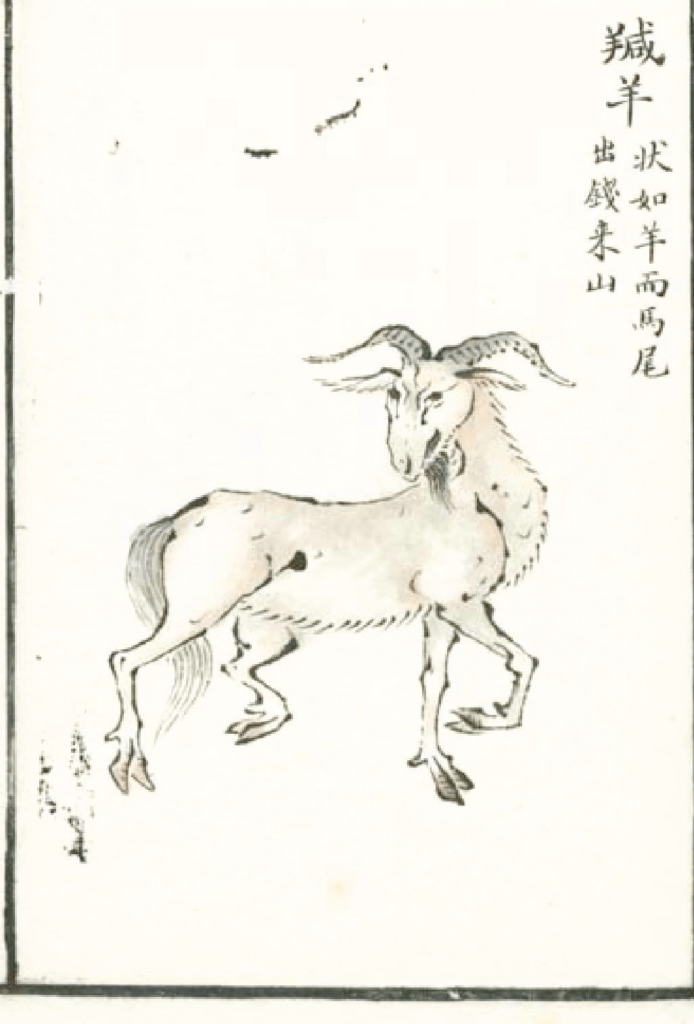
羬羊 (Qian yang) is a beast on the mountain that looks like a sheep, but has a horse’s tail. The oil from its fat can be used to treat chapped skin.
《山海经·西山经》
华山之首,曰钱来之山,其上多松,其下多洗石。有兽焉,其状如羊而马尾,名曰羬羊,其脂可以已腊。
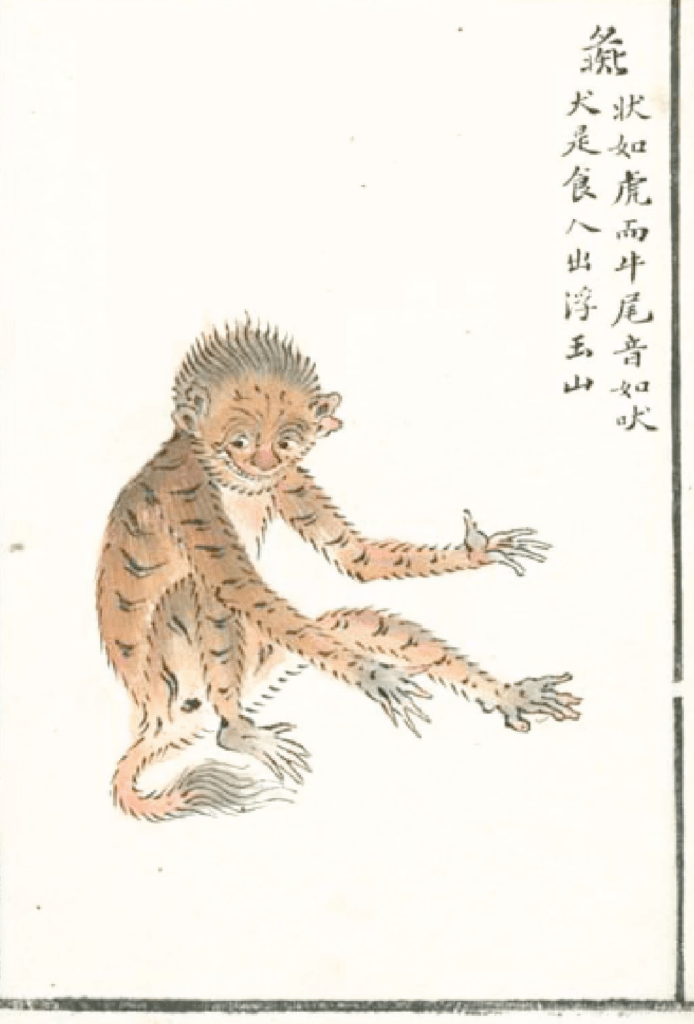
In the mountains, there is a beast called Zhi(彘). It looks like a tiger, has a tail like a cow, and barks like a dog. It eats people.
有獸焉,其狀如虎而牛尾,其音如吠犬,其名曰彘,是食人。
《山海經 南次二經》
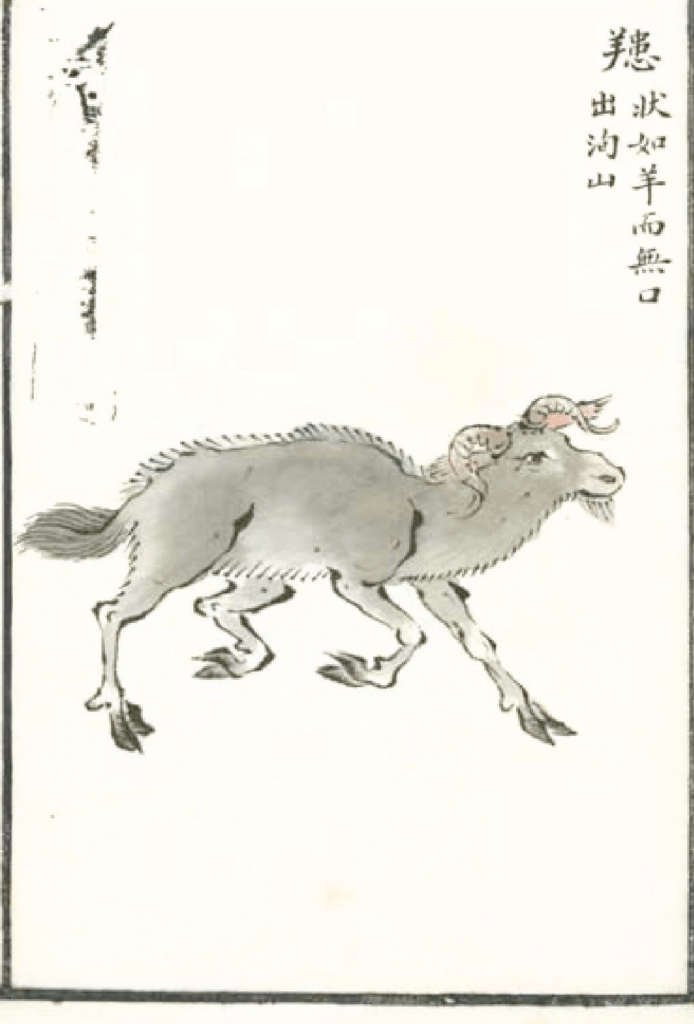
The Huan(䍺)’s shape is like a sheep’s, it has no mouth, but it will not starve.
又東四百裏,曰洵山,其陽多金,其陰多玉。有獸焉,其狀如羊而無口,不可殺也,其名曰䍺。
《山海經 南次二經》
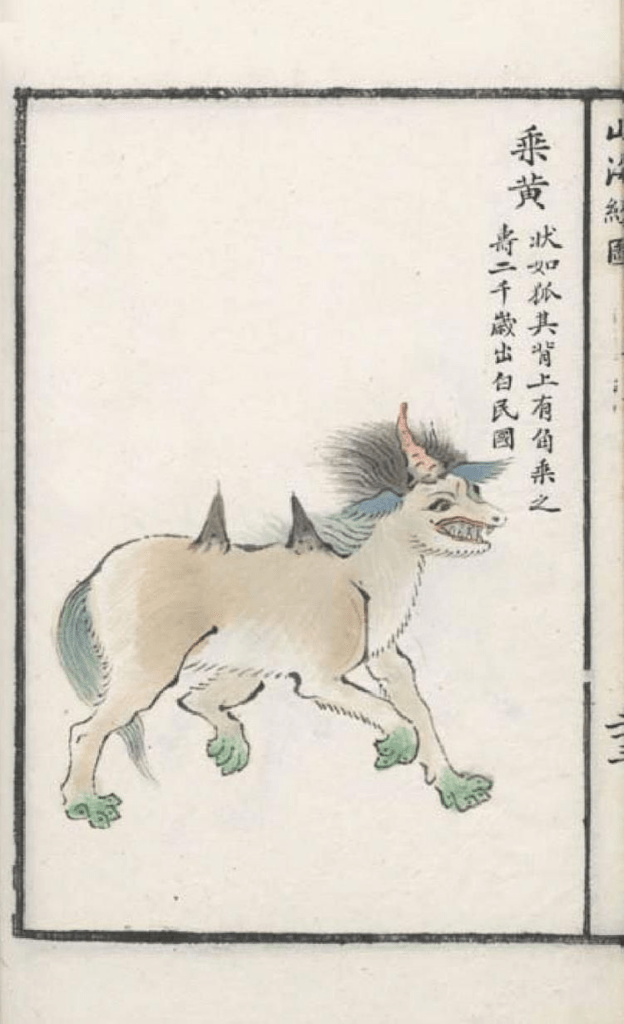
Chenhuang(乘黃/飛黃)is a mythical creature in ancient Chinese mythology. According to the Classic of Mountains and Seas(山海經), it looks like a fox, has a horn on its back, and is yellow in color. The person who rides it will live for 2,000 years longer.
白民之国有乘黄,长得像狐,背上有角,毛色是黄的,乘者增寿二千岁
Penglai(蓬萊) is a fairy mountain that lies between reality and imagination. Legend has it that Penglai is located in the Bohai Sea, resembling clouds when seen from afar.
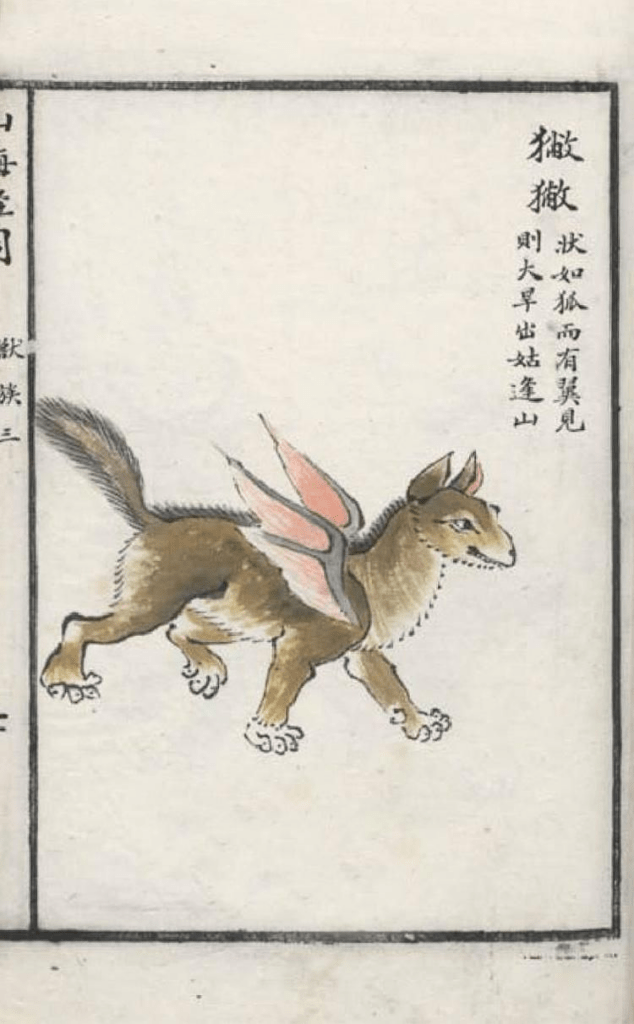
a mythical beast in China, lives in Mount Gufeng(姑逢). It is like a fox with wings, and its cry is like that of a swan. When it appears, the world will be struck by a great drought.
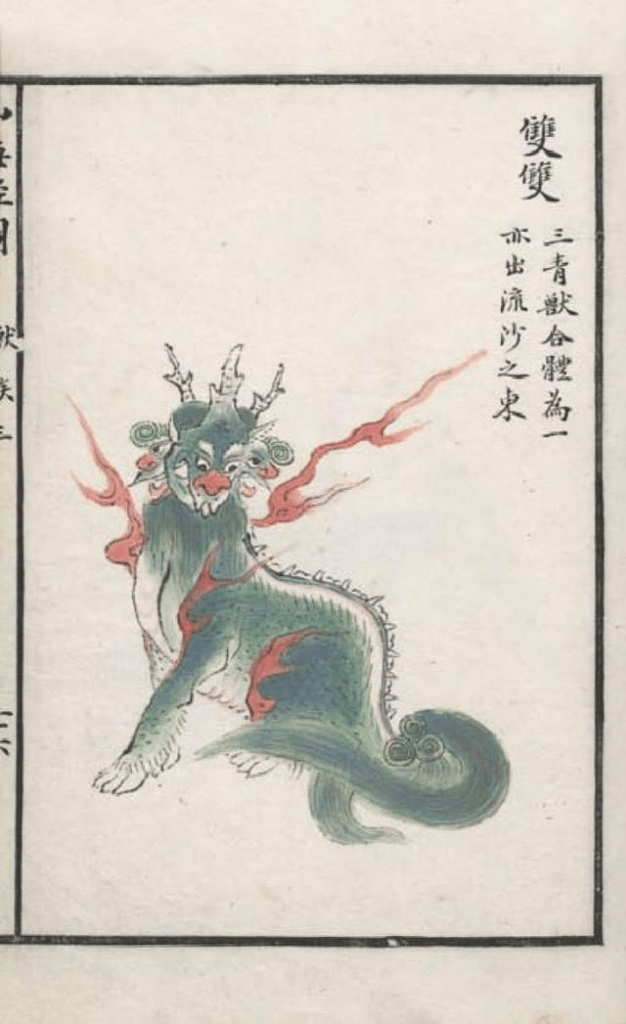
An animal in Classic of Mountains and Seas formed by the combination of three green beasts, called Shuangshuang(雙雙)